More Sunbathing
05/17/2022. The last page was getting a little long. This one is more of the same. Sliding the USB Traffic setting up to 90, things again worked fine. The sky was slightly hazy but cloud free. A little bit of wind and a little polar misalignment provided minimal sport. I managed a mosaic of a large field of solar activity: 3,000 frames at 2400 x 2000 pixels times six, which comes to just over 80GB of video data. Why is it that after I buy a fast computer, I am thrilled with speedy processing times and gradually up the ante until I am back in the regime taking minutes to acquire data and hours to process them? Do not answer that.
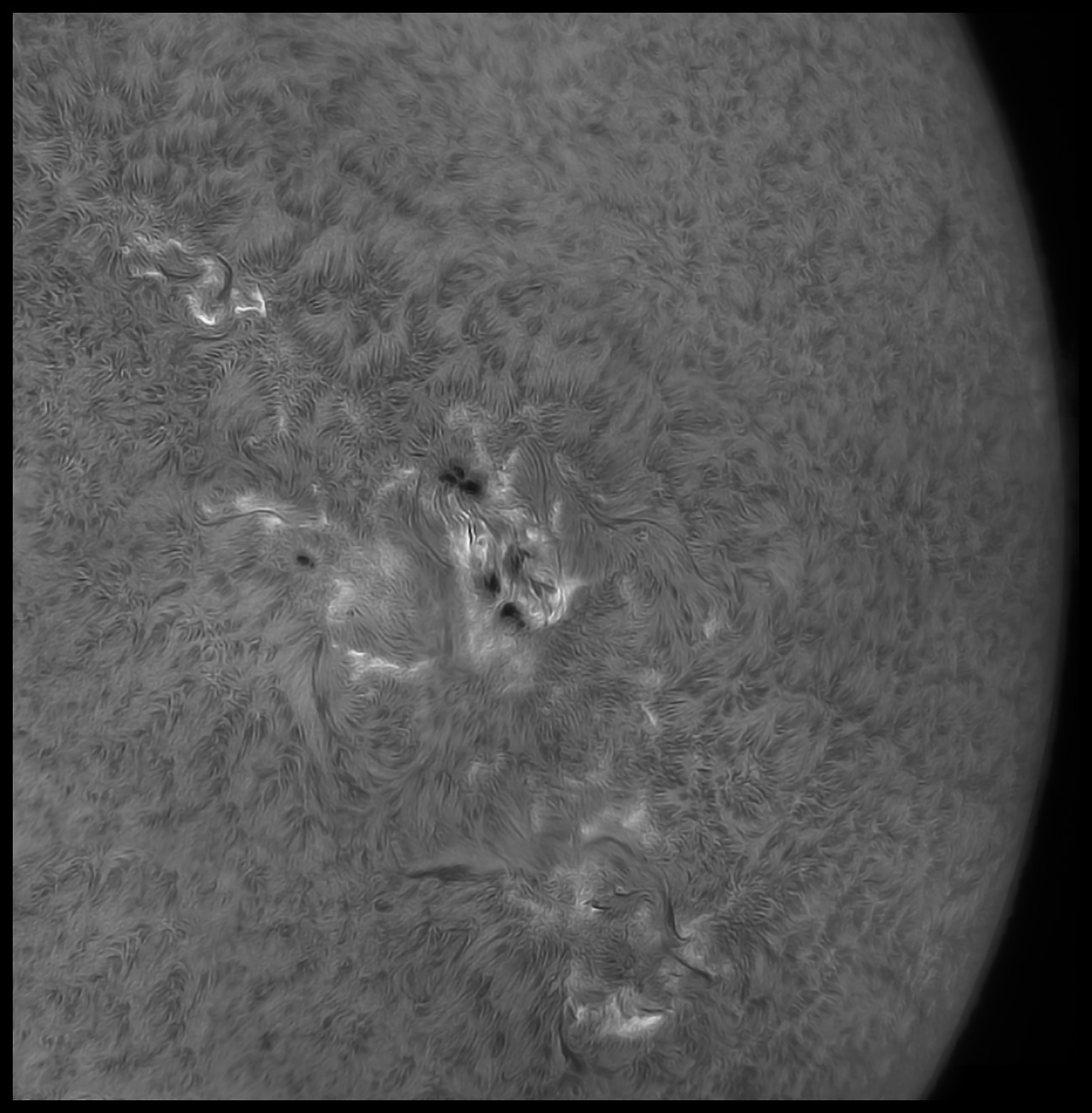
The original mosaic is about 7,000 pixels across.
The view up above is 1/100 of the total. Click it for more,
but there's still a lot left where that came from.
One leftover from yesterday. No drizzling, best 1,000 of 3,000 frames:
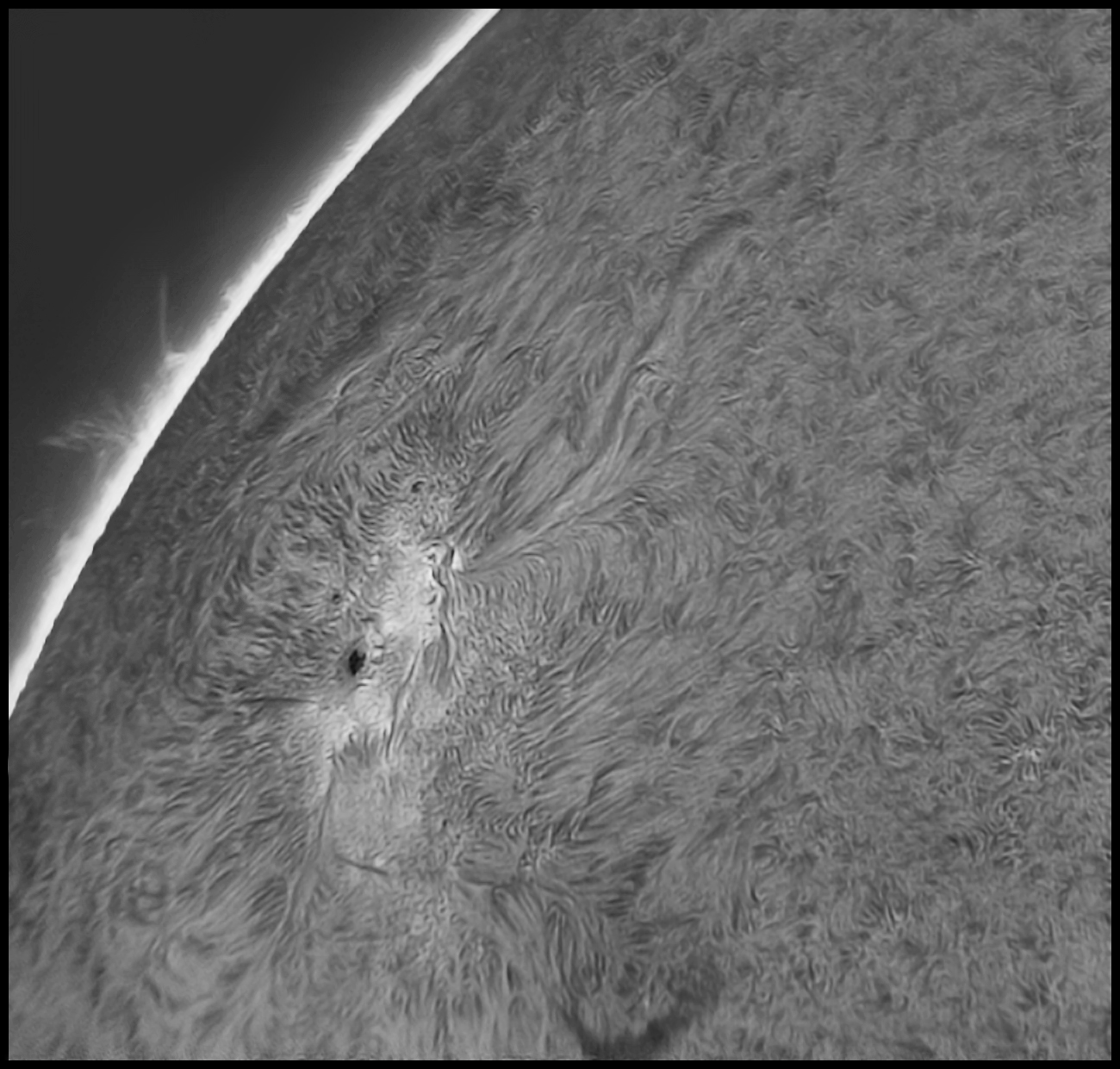
5/19/2022. Way, way back, I set up in the front yard to catch Comet McNaught, and I think I set up there for a lunar eclipse a few years ago. Likewise today: I didn't want to wait for the Sun to clear Meridian Pine, so I observed from the opposite side of the house in the narrow moss lawn there. I took my best guess at north based mostly on the shadow of the roof and eyeballed the elevation. From the drift rate, I didn't do too badly. Today was hazy, but at least there was no wind in that protected space. To judge by the live video, seeing was not good, but after refining the take, resolution seems OK. Here's the result of the last video of the day, a perfectly casual 5,000 frame clip, made from the best 1,000 frames with no drizzling:
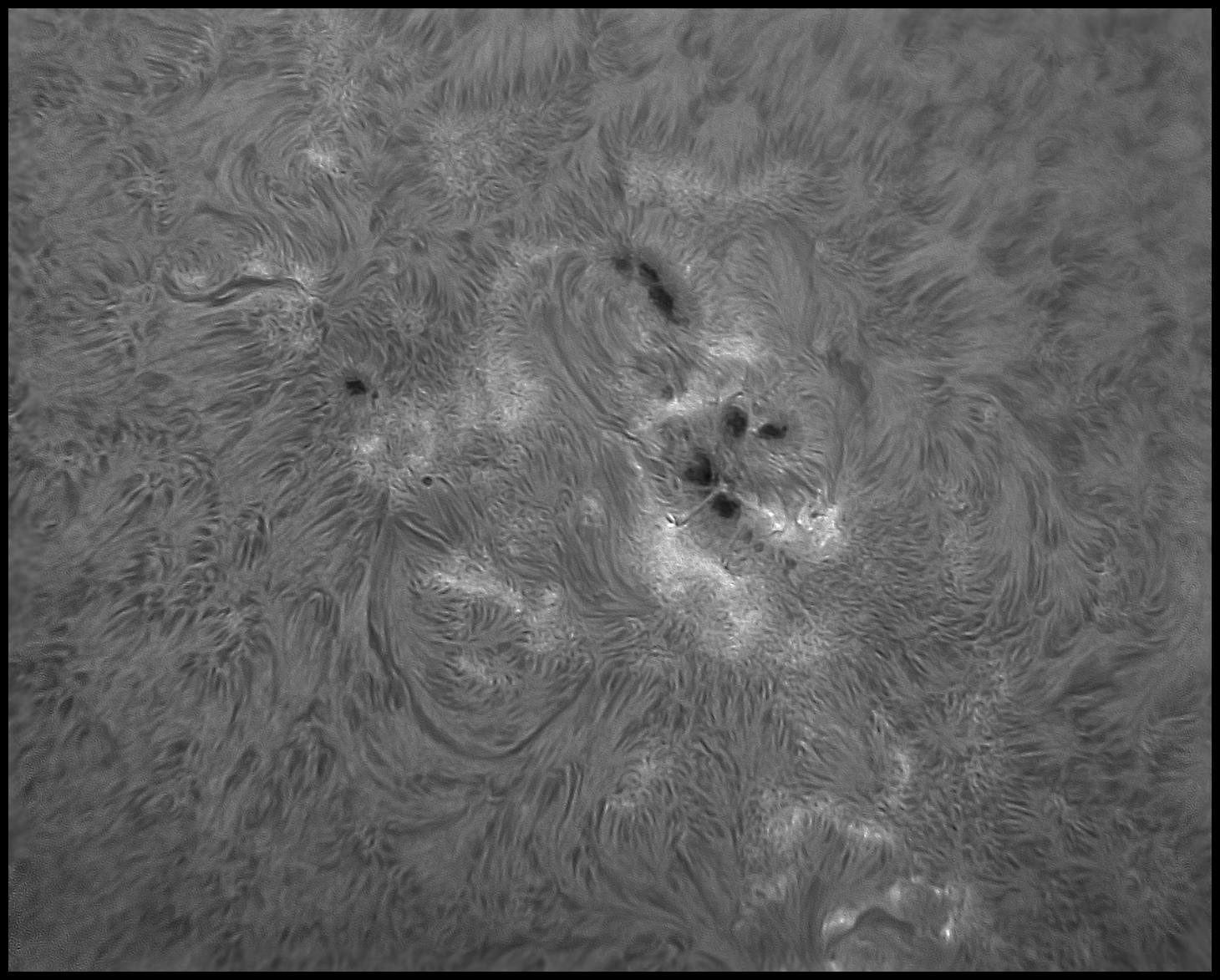
The image broke up during one previous try, not in a couple of others. A camera-restart fixed that. FWIW, the computer battery gave out shortly after the breakup (I had a spare). I went looking for electron drains and discovered that the Toughbook's wifi was on for no good reason. It's now off. There may be some other power sumps buried in the registry.
Every image on this page can be made large with just a click.
5/21/2022. See, I stood out there and dodged clouds and kept the stream running smoothly and I took several 2,000 frame "snapshots" and tried them with gamma set low (for high contrast on the screen, live) and without gamma (to maximize tones on the chip). And I discovered that a 2,000 frame video can be processed in AS!3 down to a sharp image with low noise and good tones using its best 400 frames without drizzling in five minutes or less (compared to the 30-45 minutes I've been spending refining images from 5,000 frame clips using their best 1,000 with 1.5x drizzling). Did my best, but the best result is a mosaic built from two, three thousand frame clips.
The truth is: shoot at least 3,000 frames, use gamma for focusing only, use the best 300-500 frames, and drizzle. The pipeline is still pretty fast with those parameters. I seem to run into a bottleneck, possibly paging, possibly just a combinatorial explosion within the algorithms, somewhere north of three and south of five thousand frames.
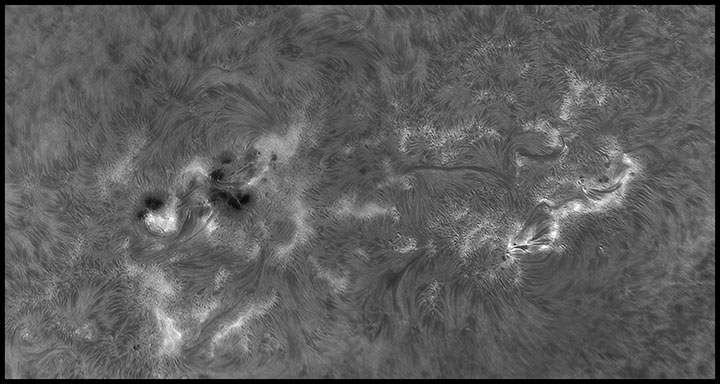
Best 400 of 3,000 frames, times two. Captured w/o gamma. Drizzled 1.5x
Make it bigger. Go ahead, I'll wait here.
No, really. You have to enlarge that one.
5,000 frame clip / 1.5x drizzle / 390 alignment points. It takes about 10 minutes to establish stabilization, sort by quality, and set alignment points, then stacking:
200 frame stack : 12 min
400 frame stack :
12 min
800 frame stack : 18 min
1000 frame stack:
22 min
1200 frame stack: 26 min
Using frames 1 - 2,000 for a 200 frame stack: 5 minutes.
There are interesting trade-offs. The best and worst finished results are not that dramatically different. Using enough of the best frames is more important than using all of the best frames.
At the moment, I don't think buying more RAM is the order of the day. Messing around to find what factors influence the processing time is cheaper. If I were going to spend money on this, I'd be wondering what would happen if I put two offset 75mm ERF-D filters in front of the 10-inch RC and piped the resulting light through an H-a etalon. But I'm not going to try that right away, either.
5/22/2022. The active region just keeps getting better. The trailing AR let loose an almost-M-flare this morning which I missed, but I did arrive in time for this view. Note that the bright assembly at left is an overhead view of some complex arcade loops. I've flipped the mosaic around with respect to earlier images on this page to reflect a more "natural" orientation as all this action begins to rotate out of view.
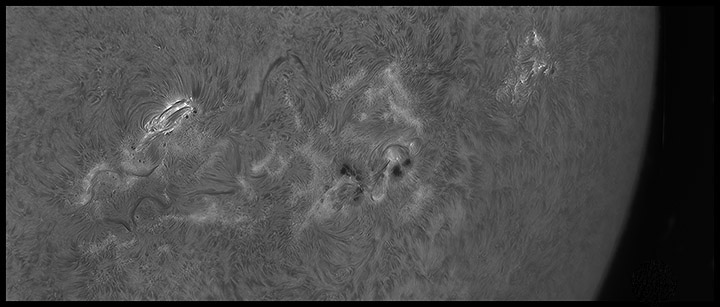
Make it big or don't be coming around here no more.
The horizontal image breakups which were prompting me to restart the camera repeatedly then scramble to capture a clip or two before they returned were apparently due to flaky USB3 cables (I imagine capacitance building up in damaged wire, but that's from someone who barely got out of intro E&M). Amazon handed me two fresh Belkin cables today (too late for this capture) one of which I plugged in and used to capture five, count-em, five consecutive 5,000 frame clips of the underside of clouds with zero issues. One is stashed with the Toughbook, the other with the ASI1600MM. As if to assure me that the solution has been found, the Clear Sky Clock promises me that I won't see the Sun again for at least four days.
Next: how about a flat-field diffuser so I don't have to keep abandoning focus every time I have to restart the camera and take a new flat (which I hope is a thing of the past anyway, but nevermind, it's still a useful tool).
6/17/2022. Earlier this week, Monday, I pulled a muscle, blew up a tendon, caught a cramp, did something to some tissue in my left hip. Emergency room x-rays and CT-scans assure me that the hip implant is fine, there is no fracture, I have no kidney stones, or any other critical problem -- which really only leaves some kind of strain. I went home with some potent meds. Today, Friday, I felt really good. After looking at H-a patrol photos and noting good seeing on the nearby Clear Sky Chart, I gave in to temptation. I very carefully carried the minimal solar kit the minimal distance into the yard and captured some really good clips. Excellent tracking, no image breakups. It was, of course, the classic case of doing too much too soon. I felt good and mistook masked pain for healing. Things are better now, hours later, but not that much better. So tonight I am paying for it. I suffered for today's prize, and it's going up on the web where it might remind me not to make that mistake twice.
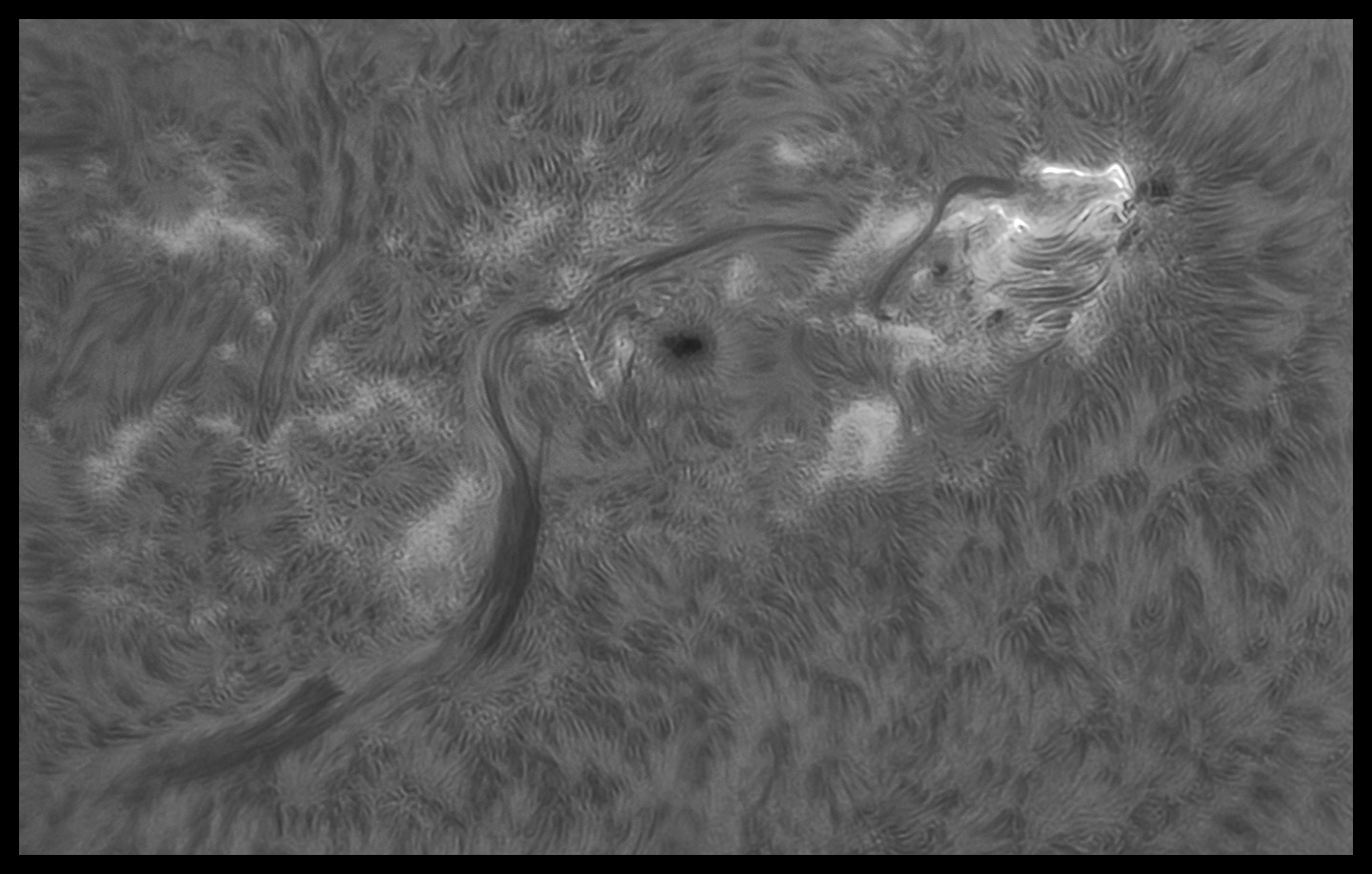
C-Class Flare and Huge Filaments
Best 500 of 3,000 (2000x2080) frames times two.
With the flatfielding tools available in the capture software, it's entirely possible to use the entire 178MM field of view. That makes covering larger expanses of the solar surface simpler. Here's an image of the same region made from two full-frame clips (best 300 of 1,000).
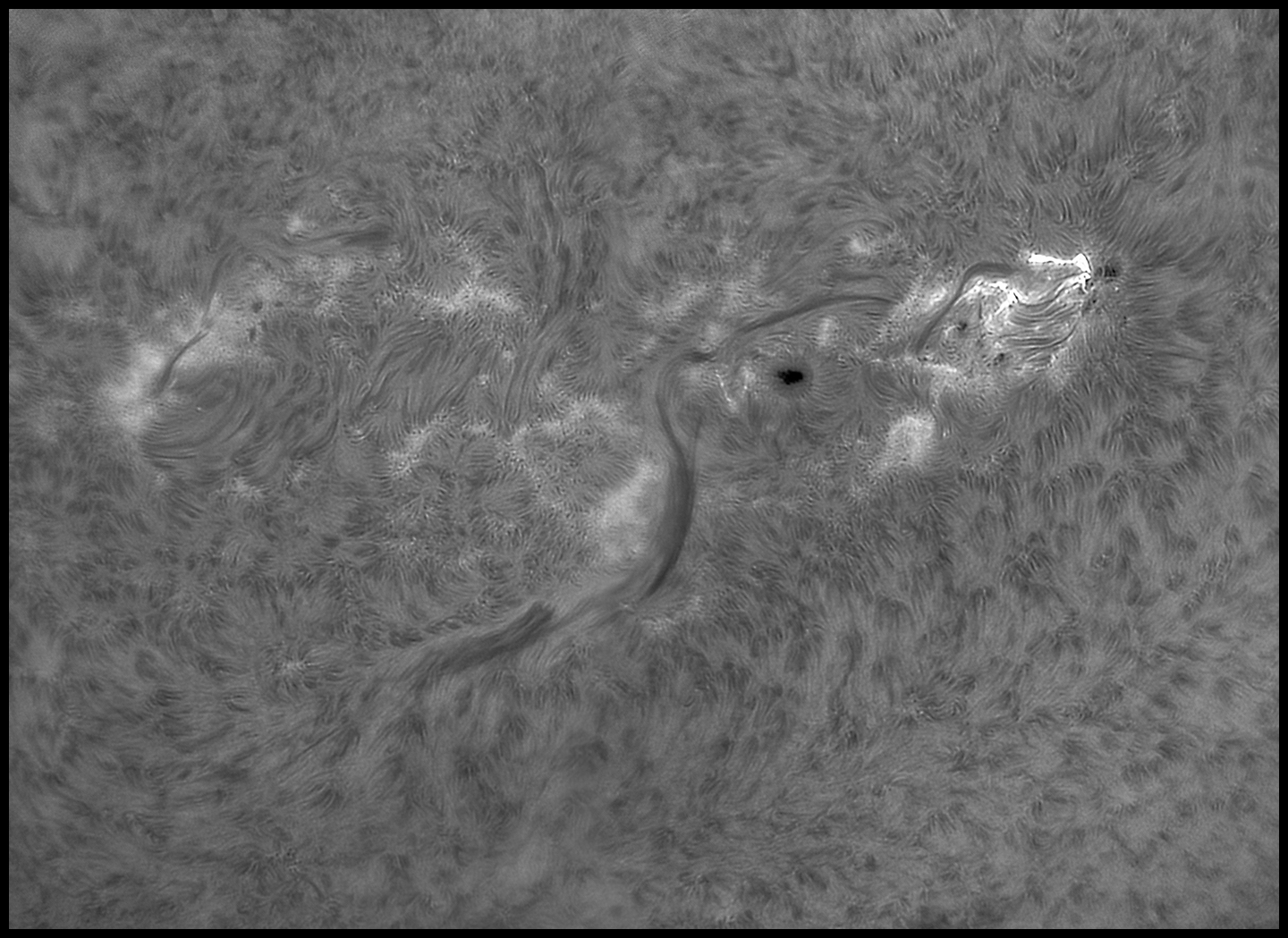
C-Class Flare and Huge Filaments
Can you click it? You certainly can, and should.
Best 300 of 1,000 full-frames times two.